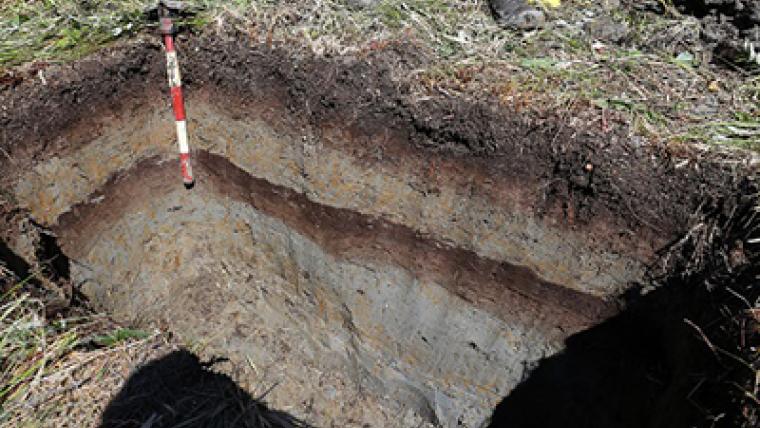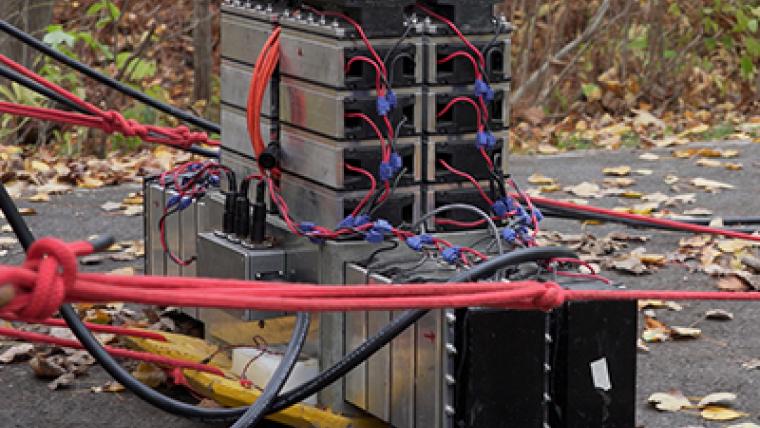Voices of Science: Four women on the future of science
On International Women’s Day, Simply Science is celebrating the scientific achievements, research, and leadership of women working in sustainable natural resource development at Natural Resources Canada (NRCan). Women across NRCan have key roles in balancing the social, environmental and economic dimensions of sustainability.
Meet some of these leaders and discover what they have to say about the future of science at NRCan.
Doreen Churchill is the director of the Corner Brook Research Facility in Newfoundland and Labrador, which is part of the Atlantic Forestry Centre of the Canadian Forest Service.
Dawn Kellett is a research scientist at the Atlantic division of the Geological Survey of Canada.
Tabitha Takeda, an environmental and mechanical engineer, is the manager of Renewable Heat and Power Group – CanmetENERGY in Ottawa.
Solange Nadeau is a senior forest sociologist at the Laurentian Forestry Centre, Canadian Forest Service.
Can you share a memorable story from your research or career that had a significant impact on you?
Doreen: Looking back to high school — science was not something I would have said I had a great love for. So off I went to do an arts degree. I did need a science elective, and the only one that fit my schedule was chemistry. I was not thrilled. However, in that first year of university, I found myself surprised to really love that chemistry course. The main reason behind that was the professor. He noticed my achievements in his class and asked me to work as a research assistant in his lab. I found an instant love for chemistry research — thus a program switch to a science degree in environmental chemistry.
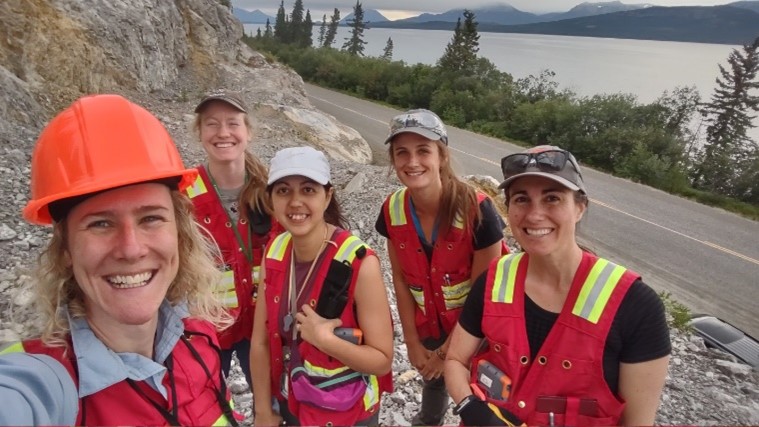
Dawn Kellett (right) of the GSC-Atlantic division with her research team in the field.
Dawn: This past summer, I led an all-woman field research team in remote areas of southern Yukon and northwest British Columbia. My favourite day was when we also happened to have a woman pilot flying us out for a day traverse. We all immediately realized that it was the first time any of us had been in an all-woman helicopter cabin!
Tabitha: As I have spent most of my career working in R&D to mitigate climate change, results are slow and individual contributions are not always evident. My work on marine mammals’ protection, to avert vessel strikes and reduce vessel noise, was the first time I actually felt like a true public servant as the work I did had an immediate and visible impact.
.jpg)
Solange Nadeau at a workshop hosted by Cold Lake First Nations in 2017.
Solange: My first participation in a scientific conference was definitely a memorable moment. I was finishing my master’s degree, and I knew my days in economics were over. I also thought it was the end of my higher education plan. But at the conference, I met the man who would become one of my mentors: the first forest sociologist for the Canadian Forest Service. It took all my courage to approach him on the last day of the conference. Speaking English and asking questions were not among my strengths! I explained my journey to him, that I was curious about his research, and he told me to write to him if I had more questions. That’s how we began discussing research and social sciences in forestry. This has been going on for more than thirty years!
What changes have you observed as women in science during your career, and what further changes would you like to see?
Dawn: In the early days of my career, 15 to 20 years ago, I perceived that my research peers were becoming more and more male-dominated as I moved from undergrad to grad school, to my post-doc and then my research position. I think in response to that, I was moving around a bit nervously in the research space hoping that no one would notice I wasn’t male, that no one would decide that I didn’t fit in or maybe couldn’t handle field or research leadership. I tried to make sure that my “woman-ness” wasn’t a problem for anyone. My first pregnancy forced me to drop that approach (ha!). Now I shake my head at that state of mind. Today, in my work at NRCan, I feel supported in allowing myself to be my own “type” of scientist.
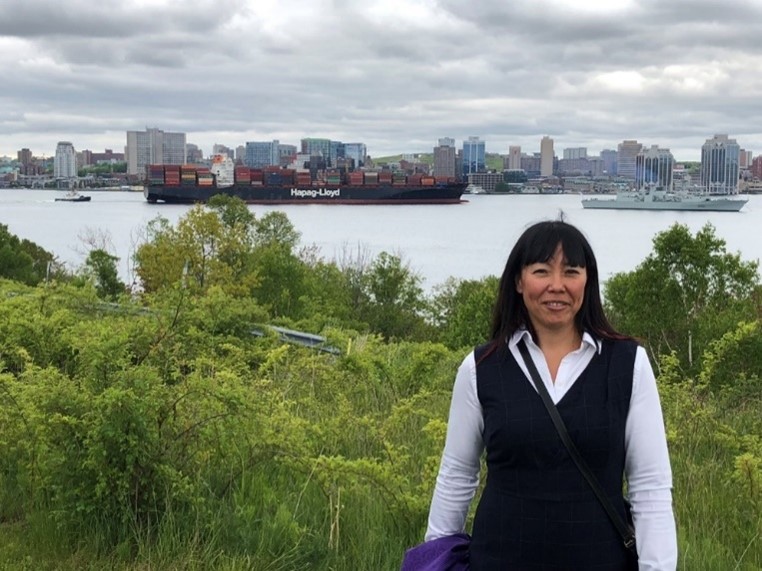
Tabitha in the Maritimes, one of the places where her engineering work on ocean vessels has had an impact.
Tabitha: At the outset of my career, I saw less females in scientific roles than men, at least in the groups I worked in. There were many times that I was the only woman and usually the youngest person at the table. Since becoming a hiring manager, I have been encouraged to see that there are increasing numbers of female applicants. But I believe more needs to be done, as I still see scientific teams that have no women and a distinct lack of females in leadership positions. I am happy that I have had the opportunity to bring five women to my team.
Solange: If I think about my career as a woman in science, it exists first and foremost thanks to the women in my family who always encouraged me to do what I love; to the women who taught me to love learning in primary school; and to the two high school chemistry and mathematics teachers who were the first to show me that science could be feminine. Because of them, I had valuable skills when I ventured off the beaten track into the world of forestry research, where my career took roots, where I also met men who were strong allies. I hope that their kind and open-minded approach has become more common, as it nurtured diversity.
What would be an interesting aspect regarding your work that you could share, that you don’t readily get an opportunity to talk about?
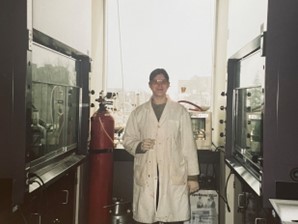
Doreen as a graduate student. Here she was conducting research for soil remediation. Her journey to provide scienc- based sustainable solutions began in the chemistry lab.
Doreen: Science has been a big part of my life. My whole career has involved science in various ways: as a graduate student researcher; a project officer in a research organization; a research officer within the Newfoundland and Labrador provincial government; a forestry officer conducting bioeconomy research; and, most recently, as a science director within NRCan at the Atlantic Forestry Centre located at the Corner Brook research facility in Newfoundland and Labrador. Over the years I’ve enjoyed conducting my own research (love a good day in the lab!), but I’ve also enjoyed simply working in an environment with science taking place around me.
Simply Science would like to sincerely thank Doreen Churchill, Dawn Kellett, Tabitha Takeda and Solange Nadeau for taking the time to share their insights, and we would like to acknowledge all the outstanding research that women at NRCan are accomplishing. We would also like to recognize the role the Office of the Chief Science has in promoting and sharing stories of the incredible and diverse science underway in the department.
Page details
- Date modified:

